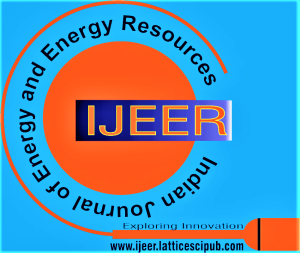![]()
A Relative Study of Solar Air Heater Having Turbulators
Gyaneshwar Sanodiya
Gyaneshwar Sanodiya, Department of Mechanical Engineering, Oriental College of Technology, Bhopal (MP), India.
Manuscript received on 14 July 2022 | Revised Manuscript received on 26 July 2022 | Manuscript Accepted on 15 August 2022 | Manuscript published on 30 August 2022 | PP: 7-10 | Volume-1 Issue-4, August 2022. | Retrieval Number: 100.1/ijeer.D1018081422 | DOI: 10.54105/ijeer.D1018.081422
Open Access | Ethics and Policies | Cite | Mendeley | Indexing and Abstracting
© The Authors. Published by Lattice Science Publication (LSP). This is an open-access article under the CC-BY-NC-ND license (http://creativecommons.org/licenses/by-nc-nd/4.0/)
Abstract: Due to the depletion of fossil fuel reserves, it is now more important than ever to explore and use alternate forms of energy. “Solar energy is a promising long-term solution that can meet the world’s energy needs. Due to the depletion of fossil fuel reserves, it is essential that we explore and use energy-related solutions as soon as possible. Solar energy is a promising long-term solution. Artificially roughened solar air heaters perform better than the smooth ones under the same operating conditions. However, artificial roughness leads to even more fluid pressure thereby increasing the pumping power. In this article a comparative study of thermo-hydraulic performance of two different types of artificial roughness geometries attached on the absorber plate of solar air heater” has been performed in terms of thermo-hydraulic performance parameter.
Keywords: Solar Energy, Solar Air Heater, Artificial Roughness, Thermo-Hydraulic Performance.
Scope of the Article: Renewable (Biomass, Hydro Power, Geothermal, Solar, Wind)
